#Conic hill
Explore tagged Tumblr posts
Text

#Guardando già da lontano il pub che mi avrebbe servito da bere la sera#Conic hill#The West Highland Way#west highland way#scotland
129 notes
·
View notes
Text
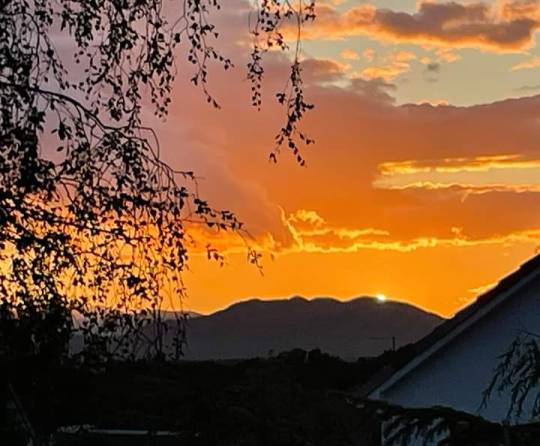
Sunset over conic from my wee sisters bedroom window tonight.
56 notes
·
View notes
Text
It's a bit cloudy
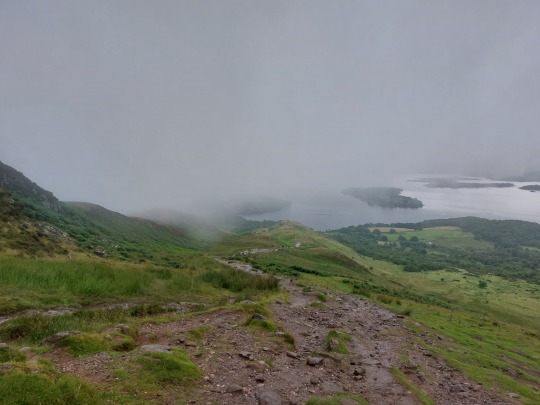
42 notes
·
View notes
Text
2 notes
·
View notes
Text
Hanmer Springs
A lovely spot an hour and a half north of Christchurch, Hanmer Springs offers more than just its famous thermal pools, with some great walks and probably one of the nicest town centres in New Zealand, though competition in this regard isn’t huge. The obvious place to start are the Hanmer Springs Thermal Pools, which are the main driver of the town’s success (and struggles at times) over the past…

View On WordPress
#Conical Hill#Forest Amble#Hanmer Springs#Hanmer Springs Thermal Pools#Hike#Hiking#New Zealand#photography#Rutherford Crescent Reserve#Tramp#tramping#travel#Walk#walking#Woodland Walk
1 note
·
View note
Text

In Super Mario Sunshine, there is a unique symbol on the wall of the alcove on the front of the windmill in Bianco Hills. While it might be obvious to some players, it is easy to overlook due to the stylization of the drawing that it actually depicts a Pianta, with the triangle depicting their conical bodies and the upper shape being a simplification of the palm trees on their heads.
Main Blog | Twitter | Patreon | Small Findings | Source: CameronOnClosed
217 notes
·
View notes
Photo

Mystras
The city of Mystras (or Mistras) in southern Greece was the provincial capital of the Byzantine Despotate of the Morea from the 13th through the 15th centuries CE. It was founded in 1249 CE by William II of Villehardouin, and it served as a center of intellectualism in the late Byzantine world. After the fall of the Byzantine Empire, the city surrendered to the Ottomans in 1460 CE and remained in Ottoman hands, with brief interruptions, until 19th century CE. The city was abandoned in 1832 CE, but its spectacular Byzantine ruins continue to attract visitors and are listed as a UNESCO World Heritage Site.
Founding of a City
In 1249 CE, William II of Villehardouin, Prince of Achaea (r. 1246-1278 CE), built a great castle on top of one of the foothills of the Taygetus Mountains. The conical hill, c. 600 m or 2000 ft. tall, dominated the plain below and thus was an ideal vantage point for monitoring the restless Slav Milengi people of the region and the nearby city of Lacedemonia. The hill was known as Mizithra, but it later became known as Mystras.
In 1259 CE, William lost the Battle of Pelagonia against the emperor of Nicaea (soon to be the emperor of the restored Byzantine Empire after the capture of Constantinople in 1261 CE), Michael VIII Palaiologos (r. 1259-1282 CE), and was captured. The terms of his release were the surrender of the castles of Monemvasia, Maina, and Mystras. In 1262 CE, the castle of Mystras became Byzantine.
When it was first occupied, Mystras was an isolated Byzantine outpost in the midst of Frankish Achaean territory. The city of Lacedemonia was still in Frankish hands, and the Greek population of Lacedomonia soon flocked to Mystras, where they could be ruled as equal citizens rather than second-class members of society. The rebellious Milengi also reached an agreement with Mystras whereby they recognized Byzantine authority. A Byzantine expedition tried to recover the surrounding area the following year but was pushed back by the Franks, and an Achaean army even besieged Mystras, but it was impossible to dislodge the Byzantine garrison. Meanwhile, Lacedemonia was practically deserted since the Greek population had moved to Mystras, and it was abandoned when the Franks retreated. Another city would not rise there until the 19th century CE when modern Sparta (or Sparti in Greek) was built. For the next six centuries, Mystras was to be the social and political center of the region.
Continue reading...
99 notes
·
View notes
Text
i learned what are the most mysterious places in the world
Marree Man – The fact that there is not a single witness to the creation of the Marree Man speaks to the absolute isolation of central South Australia. Somehow in 1998, one person or a group of people were able to create a 2.6-mile long line drawing of an aboriginal hunter, without being seen. In the midst of barren, arid land in South Australia, the Marree Man is the largest geoglyph and work of art in the world. Cut into the harsh landscape with lines over 115 feet wide and one foot deep, the towering Marree Man is easily visible from space. Thirteen years after the Marree Man was discovered during a flyover, little is known about its origin. Although we may never know the true origin of the Marree Man, it is certainly one of most intriguing modern day mysteries.

Chocolate Hills – Bohol Island in the Philippines during the dry season, you might notice what looks like thousands of chocolate kisses protruding from the terrain. These mysterious conical mounds are known as the Chocolate Hills. There are approximately 1,268 individual hills, their heights ranging from 100 to 160 feet, though the highest is almost 400 feet high. The hills, which are almost all symmetrical, consist of grass-covered limestone and turn brown during the dry season. Despite the abundance of hills, it is unclear how they were formed. There are multiple geological explanations ranging from oceanic volcano activity to limestone weathering. Numerous legends and tales also exist to explain the Chocolate Hills.

Giants Nest – In 1949 a geologist named Vadim Kolpakov discovered a large mound of limestone in the north of the Irkutsk region in southeastern Siberia. The cone is curiously shaped with a crater at the top and a small mound in the center. The mound is about 40 meters high and 100 meters across at the base. The smaller mound at the top is about 12 meters high. The crater was named Patomskiy, after a nearby river, but local residents call it “the Fiery Eagle’s Nest”. Since the discovery of the crater, there have been many theories as to what could have created it. For a long time it was believed to be a meteorite impact structure. Some linked it to the Tunguska meteorite, whose remains have never been discovered. But the crater does not resemble any other known meteorite site. Even now, the origin of the crater is not discovered.
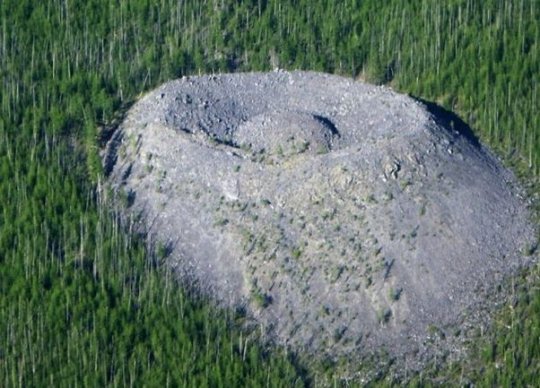
Richat Structure – In the midst of vast, vacant Sahara desert, just outside of Ouadane, Mauritania, lies a 30-mile wide geological oddity known the Richat Structure, sometimes called the “Eye of Africa.” From space, this natural curiosity forms a distinct and unmistakable bull’s-eye that once served as a geographical landmark for early astronauts as they passed over the Sahara. Once thought to be an impact crater due to its circularity, the unusual formation is now widely believed to have been caused by the erosion of a geological dome formed by pressure from a bulb of molten magma below.
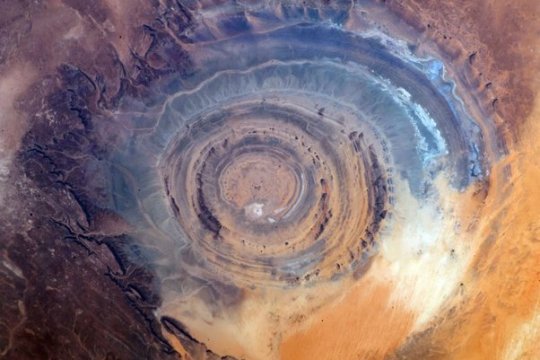
Plain of Jars – The Plain of Jars is a collection of large stone jars interspersed throughout the Xieng Khouang plain in the Lao Highlands. The stone structures are mostly made of sedimentary rock and, ranging from 3 to 10 feet in height, each can weigh up to 14 tons. To date, the origin of the jars is unknown, though archaeologists believe that they were originally used between 1,500 and 2,000 years ago. Many researchers have theorized that the jars may have once served as funerals urns or food storage. As local Laotian legend would have it, the jars were created by Khun Cheung, an ancient king of giants who lived in the highlands. It is said that Cheung, after fighting a long and victorious battle, created the jars in order to brew huge amounts of celebratory lao lao rice wine.
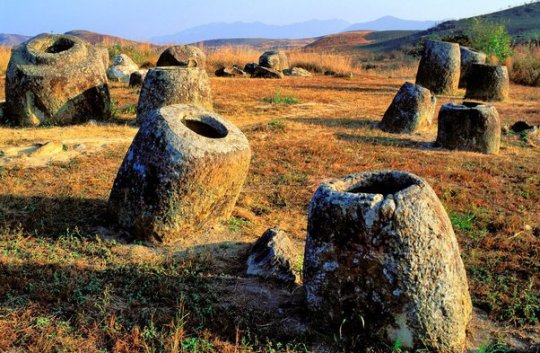
Giant’s Grave of Coddu Vecchiu – Giant’s or Tomba Dei giganti, are megalithic gallery graves that were used as public tombs during the Bronze Age. The massive gravestones were built by the Nuragic civilization, which existed in Sardinia from the 2nd millennium BCE. to the 2nd century CE. Despite the imaginative name, the sites were not the burial site of any giant; they were giant community burial chambers. Though we know the tombs had a funerary purpose, more questions remain. Little is known about the rituals or traditional beliefs that motivated their construction. Were they mass graves? Were they built to facilitate the journey into the afterlife? Since their existence has yet to be justified by scientific research, they have been credited to the supernatural, which has only increased their mystery. Legend also claims that yes, indeed, these were the tombs of powerful giants.
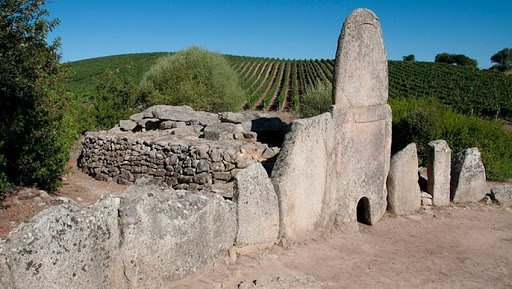
Zone of Silence – Pilot Francisco Sarabia was flying over a patch of desert land in Mexico when his instruments started to act increasingly odd. The man had to make an emergency landing in the middle of nowhere. Little did he know that this "nowhere" would be later dubbed "The Zone of Silence.” Weird radio silence isn't the only oddity of the creepy Zone. Like, what’s that weird trio that locals keep meeting in the Zone? They’re two men and a woman. Every time people see them, they’re wearing bizarre clothing that isn't suitable for a journey in the desert whatsoever. On top of all that, the Zone of Silence is known as a 50 km patch of deserted land where meteorites come crashing down on an eerily regular basis. On July 11, 1970, the US launched an ATHENA rocket from the Air Force base in Green River, Utah. The rocket was supposed to land somewhere in the area of White Sands in New Mexico. Instead, it went off course and, as if being pulled by some external force, crashed right in the heart of the Zone of Silence.
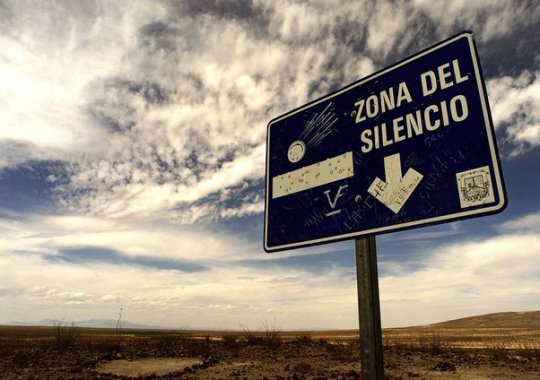
Michigan Triangle – Stretching from Ludington to Benton Harbor, Michigan and to Manitowoc, Wisconsin, the Lake Michigan Triangle has inspired numerous accounts of activity that are difficult to explain by rational thought. The mystery began in 1891, when a schooner named the Thomas Hume set off across the Lake to pick up lumber. Almost overnight in a torrent of wind, the Thomas Hume disappeared along with its crew of seven sailors. The wooden boat was never found. After the turn of the century, strange events happened at steady intervals. Of the more mysterious is the case of the Rosa Belle. In 1921 eleven people inside the ship, who were all members of the Benton Harbor House of David, disappeared and their ship was found overturned and floating in Lake Michigan. While it appeared that the ship had been damaged in a collision, no other ship had reported an accident and no other remains had been found.
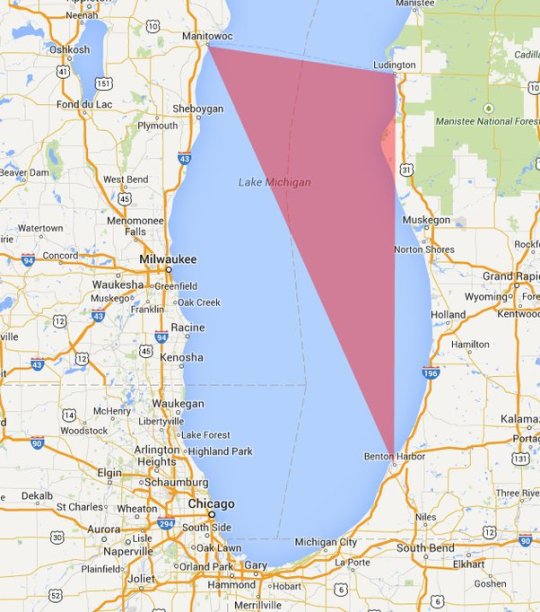
Alaska Triangle – The Alaska Triangle is a place in the untouched wilderness where mystery lingers and people go missing at a very high rate. The area began attracting public attention in October 1972, when a small, private plane carrying U.S. House Majority Leader Hale Boggs, Alaska Congressman Nick Begich seemingly vanished into thin air. For more than a month, 50 civilian planes and 40 military aircraft plus dozens of boats, covered a search area of 32,000 square miles, but no trace of the plane, the men, wreckage or debris were ever found. Afterward, more planes went down, hikers went missing, and Alaskan residents and tourists seemed to vanish into thin air. In fact, since 1988, more than 16,000 people have disappeared in the Alaska Triangle, with a missing person rate at more than twice the national average. These disappearances are blamed on everything from severe weather to aliens, to swirling energy vortexes, to an evil shape-shifting demon of Tlingit Indian lore called Kushtaka, with no scientific explanation to the disappearances till today.

The Initiation Well – The Initiation well is 88 feet deep well located on the land of Quinta da Regaleira. Actually, it was used for ceremonial purposes. There is another small well near this well. Both these wells are connected by tunnels. The larger well contains a 27-meter spiral staircase with several small landings and the smaller well contains straight stairs that connect a series of ring-shaped floors to one another. The smaller well is also called the 'Unfinished Well'. The depth of this larger well is equal to the four-storey building, which becomes narrower on going closer to the ground. It is believed that there is some kind of light comes out from the well inside the ground and comes outwards. Surprisingly, there is no system of light inside this well, then where from this light comes, it is the secret. Anyone who comes to visit here, always raises the question of where the light comes from inside the well? Till today this secret is unsolved.
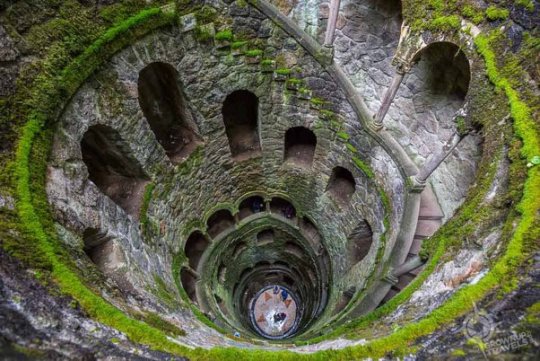
(Image Source : Google)
Thanks for Reading.
694 notes
·
View notes
Note
What concerns me with the humans are space orcs stuff oddly enough was humanity's clothing,
Looking at mass effect and other SciFi games and films the clothes suck, boring and basic design all round.
Then I look at what we wore around the 1800s, where did our sense of fashion go?
Security chief Thron frowned as they looked down at the human, classified as; "Stowaway" in the holding cell.
Xe didn't know how the conversation had spun around to this topic, but it was engaging enough to pass the hours until they reached the next spaceport to hand the human over to the proper authorities. "Human fashion is so boring."
Jupiter classified themselves as a "Hitchhiker" but after a few hours in the cell and settled on an "agree to disagree" mentality with the security chief.
They shook their head. "You've clearly not met the right humans."
Thronn shook xyr head, "I have met many humans during my service."
"Oh service," Jupiter rolled their eyes. "You can't judge human fashion based on those guys in the service. Uniforms don't count."
"It is not just humans within the service I have met. We are a cargo vessel, we bring many useful supplies to many fledgling colonies, human ones included."
Jupiter shook their head, "new colonies? You're judging fashion by what you see on the new colonies?"
"Then what of your garments? Dull colourings all over your person. Little accoutrements to be seen. Very boring. Very typical of human stowaways."
"Hitchhikers." Jupiter corrected. "You can't judge hitchhikers and colonists. They don't have the resources to waste on fancy stuff, and I've got to travel light. It's all about keeping it simple. Hardwearing stuff that lasts a long time and could be easily replaced or repaired. And the dark colours help me hide when I'm stow... hitchhiking."
Thronn decided xe would let that slip of the tongue pass without comment.
Jupiter looked xem up and down. Even in a uniform, the alien had been allowed a few accessorires of cultural significance. It certainly added splashes of colour to the usually dull grey security uniform. A small headdress with a bright embroidered pattern, a sash around the waist with a matching design, and an epaulette on the shoulder made of small conical seashells stitched onto silk and painted in bright colours.
It was certainly more than Jupiter had going on. They had a navy blue bomber jacket, dark shirt, dark khaki trousers, brown hiking boots, a black and white shemagh wrapped around her neck and a dark green and black rucksack usually slung over her back, but right now it was sitting outside the cell in an evidence locker. The closest to an accessory they had going on was a few ID patches sewn onto the jacket and bag. Name, species, blood type, and world of origin.
Photographs and memories were their souvenirs.
"Have you ever been to any of the long-established colonies? Any that have been around for a century or more?"
Thronn shook xyr head, "I haven't. The ship's duties only take us around the border worlds."
"Then you haven't seen what humans are really capable of when they get comfortable." Jupiter pointed over to the locker holding their bag. "There are some pictures on my datapad. I managed to visit Port Marinda, Alforanza, and New Barcelona last year, they're all human colonies, all about two hundred years old. Go on, get the pad and I'll show you the pictures."
Against xyr better judgement, Thronn opened the locker and retrieved the datapad. Xe opened a small hatch in the holding cell, usually used to pass meals through.
Jupiter scrolled through the pictures until they found the folder holding the pictures of their visit to New Barcelona. The pictures showed the wonderful countryside of rolling hills of silver and purple grass, scattered with trees with leaves of bright orange. Sunglasses were a must when walking in the countryside because of the risk of violent headaches, especially on sunny days. The sunsets were simply stunning, and they had amazing local fruit that looked like a red banana and tasted like raspberry and dark chocolate.
The capital city was also a sight to see. Tall, wavy and twisting buildings that looked like bright coral growing right out of the ground. Each one was a different colour so every district contained a rainbow of either bright or pastel shades.
The people were equally bright and ingenious in their clothing. Jupiter turned the screen to show Thronn a picture they'd taken of a picturesque street market.
Thronn looked at the handful of humans in the picture. One human wore a colourful dress that looked almost like millions of feathers sewn together. Even in the still image, xe could imagine how they would shimmer in the light.
Another human, a male, he wore a bright green suit, covered with silver, gossamer-like webbing which rose out of the shoulders, spreading behind him, resembling small wings.
Xe spotted a person Xe almost thought wasn't human at all until xe realised that their skin was painted from the neck down. Covering the paint was a simple dress that looked like a net. Where each thread crisscrossed with another, a brightly coloured jewel had been sewn.
One human being, who looked to be talking with a shopkeeper over some sort of food, was dressed in an elegant gown of a bright colourful fabric that looked like a sunset itself had been turned into the material that made the garment.
There was a tall adolescent human was dressed in a tight full-body outfit with an elaborate headdress which covered their entire face with a snake-like mask. You couldn't see the human and it gave Thronn an almost unsettling impression of a large bipedal reptile moving among the humans.
"You see," Jupiter said. "Forget uniforms, travellers and frontier colonies. Just give humans time to settle down, get some resources to spare and watch their imaginations fly."
Thronn had to admit it. Human fashion was not boring.
#humans are space oddities#humans are strange#humans are weird#humans are space australians#humans are space orcs#inspiration out of nowhere#just had to write something
604 notes
·
View notes
Text





Going on Bohol countryside tours is perfect for first-timers on the island, as it includes stops in some of the most famous tourist spots in Bohol, including the Chocolate Hills, Tarsier Sanctuary, and the Bilar Man-made Forest. It also features one of the most popular Bohol activities for tourists, Loboc River cruise tours which usually include a buffet lunch and a performance from the locals.
The iconic Chocolate Hills cover an area of over 50 square kilometers across three different towns. There are over 1,000 of these symmetrical and conical hills, and during the dry season, the grass on these hills turns brown, making them resemble giant mounds of chocolate. Never a complete Bohol trip without seeing this majestic view!
The trees in Bilar Man-made Forest are not man-made but are the result of a reforestation project that was started over 50 years ago. The trees planted here are a mix of red and white mahogany trees, which make for beautiful photos. The forest is located in the towns of Bilar and Loboc, and tours usually make a quick stop along the highway that passes through the trees.













Here in Lobos River Cruise, you can experience cruising along the jade-green Loboc river while you feast on a sumptuous buffet of local dishes. The combination of stunning natural landscapes, local cuisine, and cultural performances creates a memorable experience. Whether you’re looking to enjoy a peaceful boat ride, savor local dishes, or experience Filipino culture, the Loboc River Cruise offers a delightful and enriching addition to any visit to Bohol.
The river cruise starts from Loay Bridge near the Church of San Pedro. Midway through the 1-hour cruise, the raft stops in front of a large hut for a short performance by more singers and dancers dressed in traditional baro't saya where they invite guests to dance with them (read: hello siyempre papatalo ba kami haha). The raft moves along the river until it reaches a small portion of Busay Falls, from which it maneuvers for the return trip. At the end of the performance, you can help support the locals by tipping them via the donation box or by purchasing a ukulele to keep as a souvenir.
Tip: if you want to explore the river more intimately and at your own pace, you can try Loboc River kayaking or stand-up paddleboarding. For kayaking, you can rent a kayak, a paddle, and other gear from some of the resorts and tourist establishments along the river. You can also go on a guided kayak tour along the river, and if you’re brave enough to do it at night, you can even join firefly-watching tours that use kayaks.
27 notes
·
View notes
Text


88 notes
·
View notes
Text
They passed through valleys among surrounding heights and they saw the turf-crusted ramparts of hill forts that had crumbled before the world was born. On a great level meadow they saw rings of giant stones set up possibly by ancient peoples but more likely by present goblins, and since these things were outside the quest, they looked away and circled widely. Then, within sight of a forest, they drew near to a small conical hill crowned with dark pines, and their horses stopped and trembled with ears laid back and eyes showing white with fear. Sir Ewain and Sir Gawain recognized the signs and turned aside to avoid the barrow. It was not their business or their world. Their own was full enough of wonders.
— The Acts of King Arthur and His Noble Knights by John Steinbeck
#i'm gonna post a bunch of quotes from this book#starting with these passages that just bewitched me#the acts of king arthur and his noble knights#john steinbeck#arthurian legends#words#arthuriana#gella talks arthuriana#talk talk talk#gawain#yvain
18 notes
·
View notes
Text

Allison Littlejohn
Loch Lomond from Conic Hill, Scotland
125 notes
·
View notes
Text
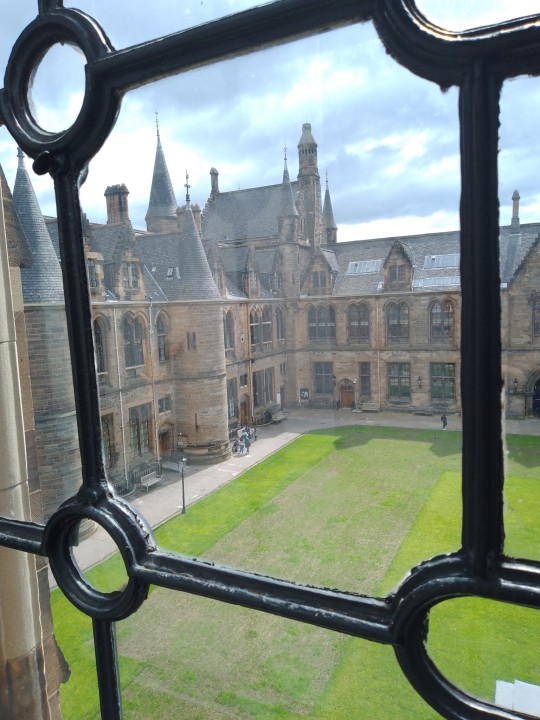
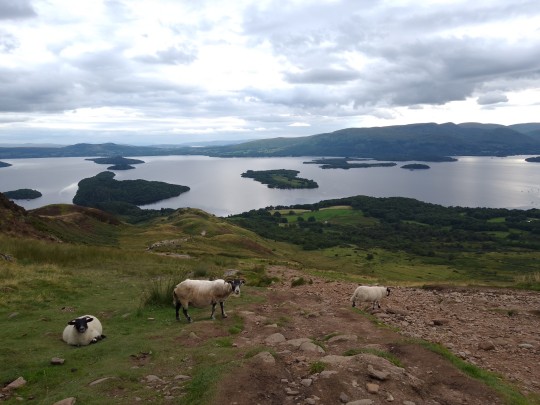
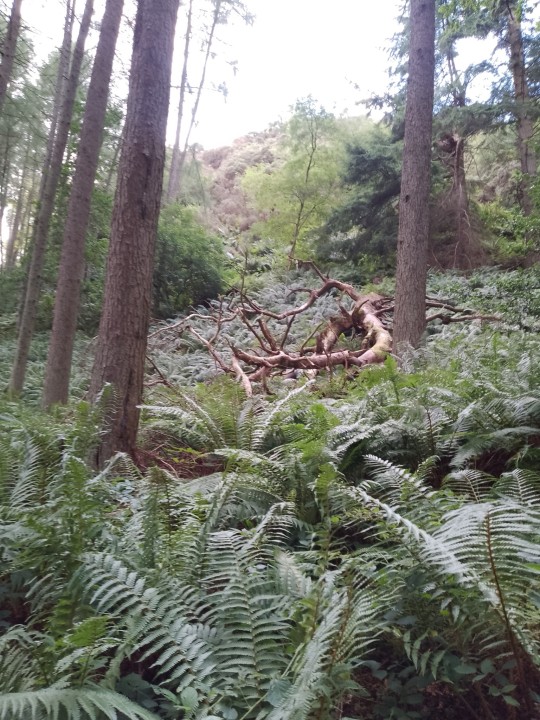
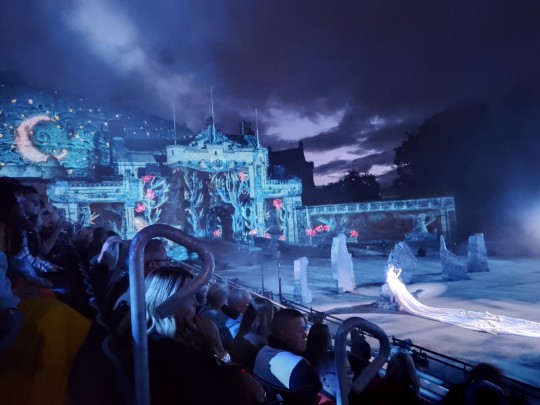
#back home#Scotland#Glasgow#university of Glasgow#Poudlard#loch Lomond#conic hill#Scottish sheep#Edinburgh#royal Edinburgh military festival#tattoo festival#castle#hunterian museum
5 notes
·
View notes
Text
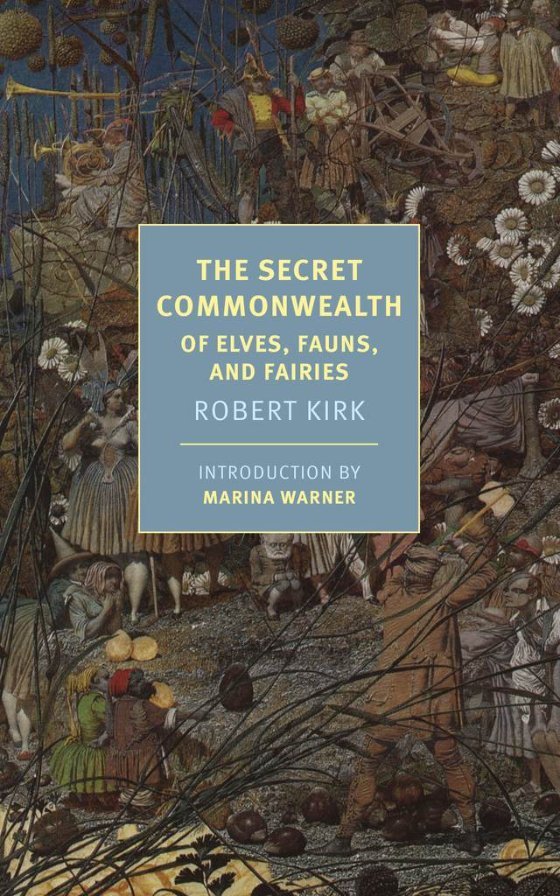
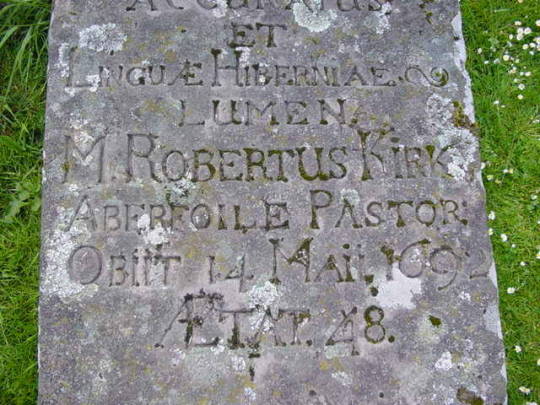
Reverend Robert Kirk was born on December 9th 1644 at Aberfoyle.
Kirk was the seventh and youngest son of James Kirk, minister at Aberfoyle, Perthshire. He studied theology at St Andrews and received his master's degree at Edinburgh in 1661. He became minister of Balquhidder in 1664, and later of Aberfoyle, from 1685 until his death in 14 May 1692.
Robert Kirk is best known for his book “The Secret Commonwealth of Elves, Fauns, and Fairies��� in 1691. In his book Kirk tells stories about folk who had contact to fairies including himself. Kirk also believed that the local Doon Hill was the gateway to the world of the fairies, also described as “The Secret Commonwealth“. Kirk is also known as the first person to translated the bible into Gaelic.
Reverend Kirk was a former resident of the Old Manse which is situated nearby the Fairy Knowe. The same house is known for the place where Sir Walter Scott wrote his famous poem “The Lady of the Lake“.
Not much off a story as such, but it was what happened after his death that is the bones of this post.
Having collapsed on Doon Hill during the night he was carted home and died of a suspected heart attack, but It is said that Reverend Kirk actually didn’t die on the hill but was carried away by the fairies. Thereafter Reverend Kirk appeared as a vision in front of his cousin Graham. He told him that he was not dead and that he would appear at the christening of Graham’s child. For Reverend Kirk it would be the only way to come back to life. When he appeared at the christening, Graham was to throw an iron dagger over Kirk. This would release him from captivity. Graham was too scared though and couldn’t do it. Now it is believed that Reverend Kirk’s soul is still inside the lone Scots Pine tree on Doon Hill.
His walks to Doon hill started usually from the church or The Manse. Doon hill is also known as “Fairy Knowe” or “Dun Sithean”. Locally the fairies have the name “Sithe”. The fairy walk leads to the conical hill which is situated in a relatively flat landscape by Aberfoyle.
Second two pics are his his grave at Aberfoyle
Much more about the Rev here https://www.thebottleimp.org.uk/.../the-supernatural.../
35 notes
·
View notes
Text

Michael Whelan - Robert Silverberg's The New Springtime (1989)
“Detailed pencil study for The New Springtime featuring the pair of ape-like humanoids. The elder male turns his wrinkled face thoughtfully toward the audience. The younger female glances off-panel right while delicately holding a simple round pendant in her long fingers.”

“Two ape-like humanoids stand in profile with a futuristic city of conical towers rising on the hill in the background. The older male turns his long wrinkled face thoughtfully toward the viewer. Cream colored cloth drapes across the white fur of his chest. A braided band rests above his brow set with a round brooch divided into quadrants. A question mark squiggle radiates from the center of each. The amber surface shines glossy in the light. The younger female stares off-panel right while delicately grasping a pendant on a chain in her thin fingers. Branches of a tree shoot overhead, limbs ending with ruffled vegetation.”
9 notes
·
View notes